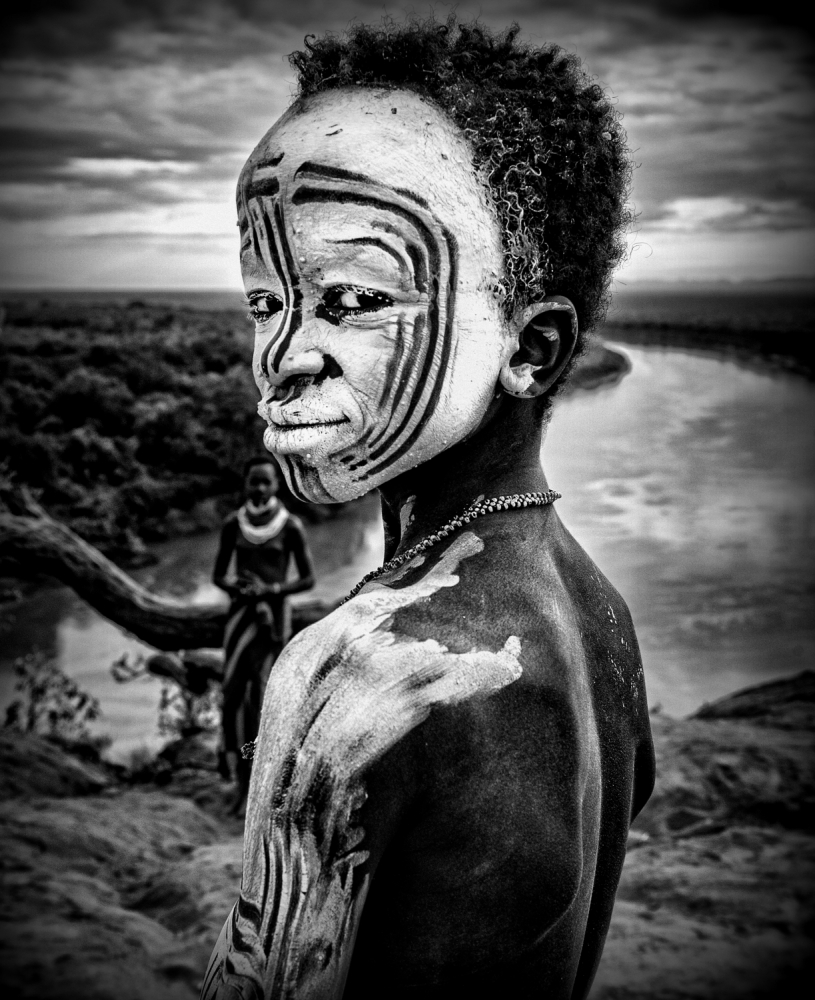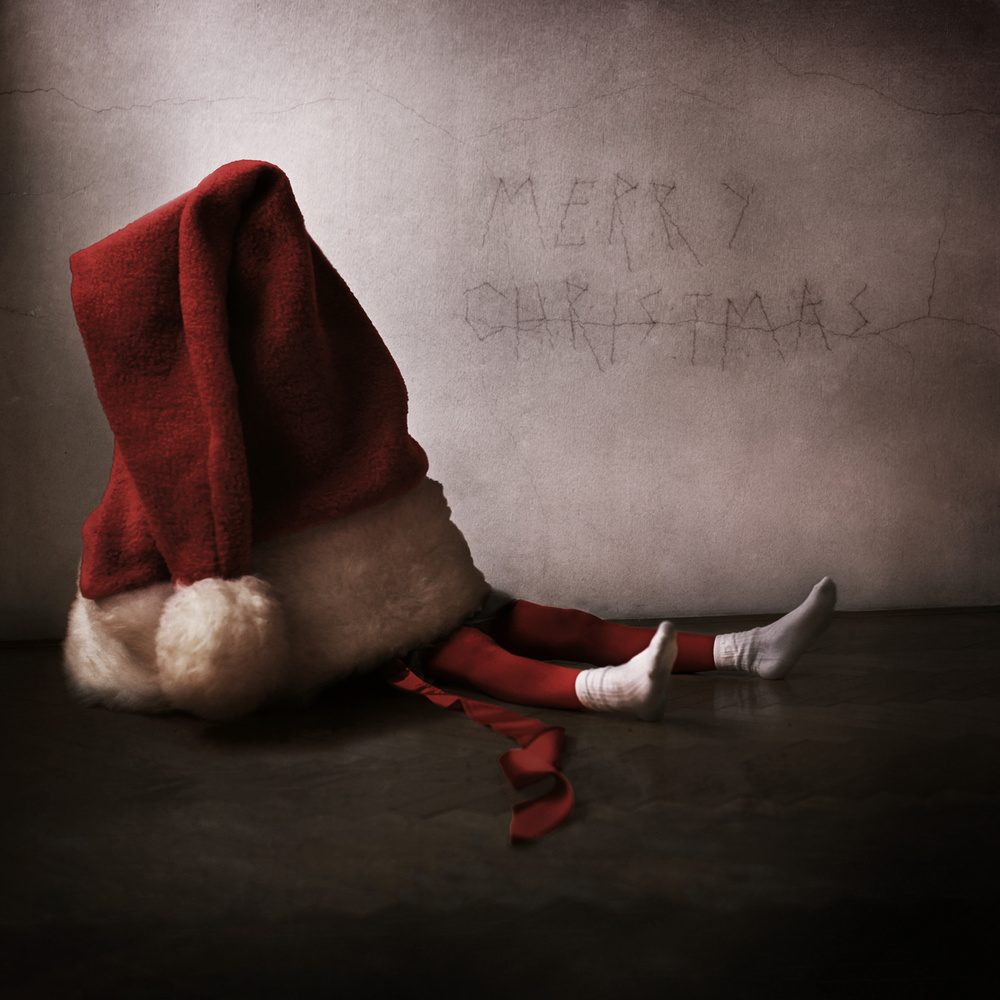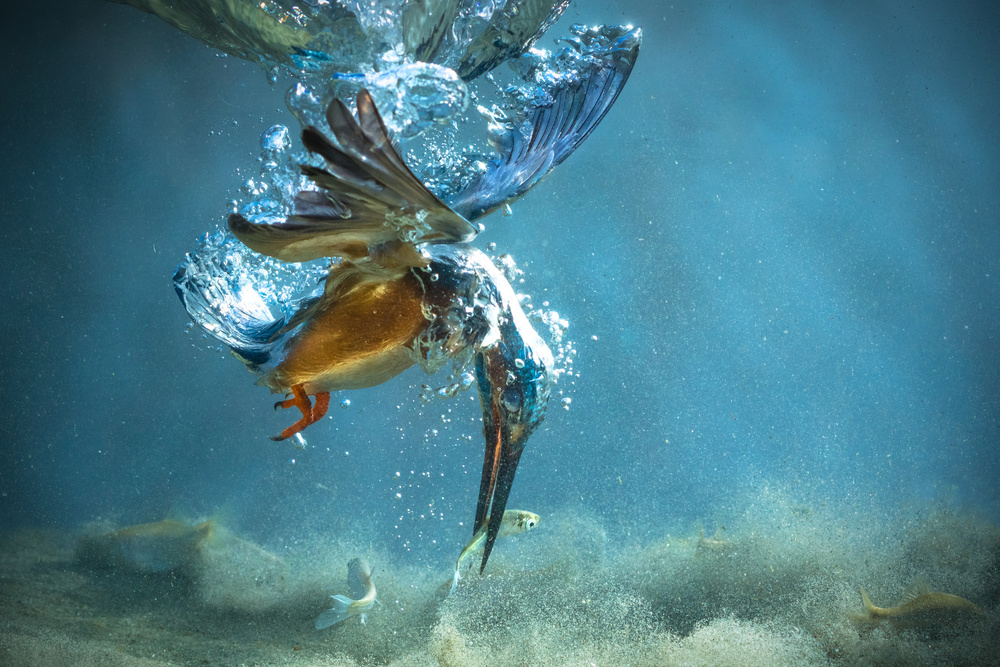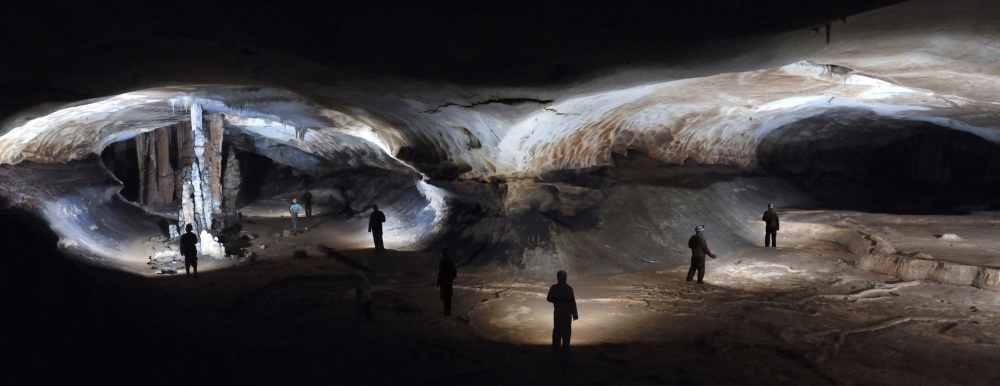Contests

Photographer of the week: Joxe Ignazio Kuesta Garmendia
1x Blog ContestsJoxe Inazio Kuesta Garmendia is an achieved documentary photographer with a strong personality and a big heart. His work reflects his intense human involvement with his subjects. He reveals people's souls behind his narrative images. Joxe makes us eager to know more about him, his work and his thoughts. Thanks to Yvette Depaepe for conducting the interview. You will find more photos by the end of the article.
Briefly tell us about yourself, your hobbies and other jobs.
I was born in December 1959 in Donostia-San Sebastian (Gipuzkoa, Basque Country, Spain) and I have been living nearby in a small town called Lezo since then. I studied economics and business and I work as a civil servant for the Government of the Basque Country.
As regards to my hobbies I could say that apart from photography, it is traveling that I love the most: I do sometimes find it difficult to draw the line between liking and needing it. Since 2002 I have been doing two or three trips a year. In fact, I spend all my holidays travelling around the world. These two main hobbies are connected to me: I cannot imagine a travel without carrying my camera. I do sometimes doubt if I travel with the excuse of taking pictures; in fact, I could say that I almost only take pictures when I travel. I spend most of my spare time in photography. The time I am not editing one of my pictures I am watching others, mostly in 1X. I am fond of reading novels as well.
How has your history and life experiences affected your photography?
Well, first and foremost, I have to say that photography has not been my lifelong hobby. In fact, it all started off after some travel experiences. It was back in September 2005 that I traveled to the north of India. My photographic gear that time was a compact Canon IXUS 500, and once back home I took a look at my pictures and noticed that it was not what I had seen: most of the pictures were blurred, and so on. I would say that I was not able to push the shutter properly: I used to move the camera when pushing. In November that year I went to Syria and it happened again. The pictures did not look like what I recalled from those places. That was the main reason why I attended a photography course organized by the “Sociedad Fotográfica de Gipuzkoa” (Gipuzkoa´s Photography Society). It is a non-profit organization located in Donostia-San Sebastian (Basque Country, Spain). This is where, thanks to its members, I learned the basics of photography. I will always be grateful to this organization I am member nr. 3.792.
Which are your most important experiences that have influenced your art?
More than experiences, I would say that it was the knowledge of different documentary photographers which lead me to that kind of photography. That added to the possibility of travel around the world did the trick. I learned to see in a different way: I started to take more interest in the composition, I got closer to people to take portraits of them, etc...
I think the experience of discovering places and various people of different races and religions influence you personally. You learn to socialize with people, where are the limits of taking photos (sometimes a hard task: We tend to think that all is free), and so on... I would not say that any particular experience influenced my work, but all of them together: the nice ones and specially the hard ones.
What first attracted you to photography?
I think that today, with the addition of the camera in the mobile phone, most people tend to take pictures of everything: we all want to record every moment. I had this necessity when I started to travel. However, at the beginning the goal was to record what I would see, no matter the quality, not what I could do with the photos. Later, I realized that with a little training and better equipment the result would be better, and I began to be more interested in and feel attracted to photography.
Describe your overall photography vision.
I have not a photography background, nor do I have a related training in the arts, which is something I do really miss now. Apart from the course taken in the “Fotográfica” my only training is to read some books and watch photos. And, I think that that, in general, makes me see the photography in a more visceral way than academic. For example, If I see an architectural photo, I am not able to see the rules of composition, nor the difficulty in making the photo, so to speak, etc... I can only see if I like it or not.
Even if today photography is a passion to me, it was not in the past. I am an amateur photographer who sometimes thinks that the only merit is to be in the right place in the right time: that is probably true, but not always. Now, I have to admit that I endeavour to try to show the emotion, purity, strength, bitterness, etc... of the people and places I photograph when traveling. That is what I am looking for in my photography.
Why are you so drawn by Documentary Photography?
I sometimes say that this documentary photography that I take is a kind of drug to me, a vital necessity to me. As I said before, I almost only take pictures while traveling, and I travel to see new places and people, and feel new emotions. And in many of these places, I see people who really interest me, to whom I establish a sort of relationship: even if it only consists of a greeting and a smile. I love to meet people of different backgrounds. I really like to approach these people, and if I can capture them in a photo then I feel happy: and maybe it is this happiness what I am looking for.
What is more important to you, the story behind your images or the technical perfection?
No doubt that the story behind my images is the most important matter, much more than the technical perfection. Having said that, I have to admit that I would like to have a better technical training, which I think would help a lot.
I have heard many people say that in documentary photography the gear is not so important; I do not agree, I think it is very important to have good photographic equipment, to know how to operate it, and have a good skill in editing photos. But above all it is the story you want to tell what matters most.
What gear do you use and what software to process your images?
Right now, the gear I carry when on a trip is: a body Nikon D800, a lens Nikkor 14-24mm f2.8 and a tripod which I barely use. I use several memory cards which I download in two external hard drives, in order to format them and have them ready for new pictures. I do two backups: I have gone through losing all the pictures from a trip, and that is not a pleasant experience.
For editing my images I use Adobe Photoshop CC 2014 and the filters Topaz Labs and Nik Collection (mainly Silver Efex Pro 2).
Can you tell us something more about your work flow?
The basis of my work is the same in almost all cases, both in the capturing and in the editing.
In the capture: As I think documentary is a kind of photography that looks for the famous “decisive moment” of Henri Cartier-Bresson, I must be ready at all time, be aware of what is happening around me. Even if that means compromising the image quality. Because these situations are usually unplanned and spontaneous, the parameters I use are the ones that I believe will serve me for different situations. That is: I set the white balance to automatic, set the camera to aperture priority mode with an appropriate ISO (as low as possible, and then change it depending on the situation) and I play with the shutter speed, keeping it faster than 1/focal length. I use automatic focus (I usually do not have time to focus manually) with a single point (central) which I direct to the main object. And I am always with my finger on the shutter, ready. For instance: if I am shooting a face, I focus on the eyes and I try to keep the focus while framing the picture.
In the editing: As all the pictures I take are in raw format, I first do the basic developing on Camera Raw. Then I send the picture to Photoshop and make the first tweaks. Then I apply filters from Topaz Labs and Nik Collection to see how the photo looks better: in color, black and white, HDR, etc...Then I start doing the local editing: I begin with the eyes, then I erase some impurities, and after that I level almost all the areas of the picture. Eventually, I crop the photo and apply an unsharp mask (sometimes I apply this mask at the beginning). When I see that, in general, there is no region on the picture which bothers me, I call it done. Sometimes the picture does not look completely fine to me, but it is usually because I do not have the know-how to make it better.
For portraits, the way in which I do the local editing is: first zoom in as much as possible and then apply the modifications using rather small brushes. This takes me a lot of time, but I enjoy it a lot: it is as if I were interacting somehow with the person, I remember her or him, where she or he was, etc...
What is your most important advice to a beginner in Documentary photographer?
One of the best pieces of advice I can give for this kind of pictures, in this kind of situations, is one´s own need. I mean: you have to be convinced and in need of taking this kind of picture, and you will do everything possible to get it. For that, you know you have to travel to these countries and you know you will suffer, go through hard times: sometimes physically, sometimes morally. But the pleasure that you get interacting with people, taking their picture, etc... that is priceless. It is also a good idea to travel alone or move away from the group you are traveling with, in order to have better contact with people that you will take pictures of, avoiding other tourists appearing on the pictures and being less obtrusive for the people there. If you have to get closer to the people, which is usually my case (I use a wide angle) a good advice is to do it with respect: almost always a greeting and a smile do the trick. Sometimes you have to pay though.
However, we can not always shoot what we want. Sometimes one has to give up and acknowledge that it cannot be done; either because you do not have the right gear or because the people will not let you take pictures of them, or even because you cannot physically access the place.
Definitely, you have to follow your instinct, which you develop with time. This instinct will tell you whether you should take the picture now or whether you should wait, whether you should move, if it is possible, etc. And of course, make different backups.
Who are your favorite photographers and more importantly, how has your appreciation of their work affected how you approach your own photography?
My favorite would be James Nachtwey. I love his work, his way to tackle the situation he is involved in. I have learned so much trying to imitate him, his work. When I see any photo of him, and feel its strength, I wonder if I will ever be able to transmit the same. I would say the same of Sebastiao Salgado and of the ones belonging to the Magnum Agency, such as Steve McCurry, Paolo Pellegrin, Alex Webb, Bruno Barbey, Marc Riboud, George Rodger, Josef Koudelka, Ian Berry, etc...
Is there any specific photo taken by another photographer that has inspired you a great deal and why?
I would mention a picture called “Madre Migrante” taken by Dorothea Lange. I love the expression of the woman in her distress, I admire how a single shot can say so much. I also like the picture taken by Nachtwey in Rwanda called “Survivor of Hutu Death Camp”. And the ones taken by Salgado in Sierra Pelada in Brasil.
But it would be more appropriate to say that it is the whole work by Nachtwey and by Salgado that really inspires me. Seeing those pictures is what makes me try to express in photography this human behavior in situations of injustice and social exclusion, situations that make you feel ashamed.
Describe your favorite photograph taken by you and why it is special to you?
I do not have a favorite photograph. Every picture is important to me even if I erase it from my portfolio. It would be easy to say that the more awarded or most beautiful is my favorite. But that’s not the most important thing to me: each photo takes me to the place where it was taken and it makes me feel the emotion I felt when I was there.
For instance, this picture was taken in Kolkata (India) in September 2014. It shows the beginning of a crematorial ceremony. Even if I think that it has a good documentary value, it is not technically a good photo. But I have a very powerful feeling with it. I got into the crematorium and I was a bit shocked by what I was seeing. But then it was the family of the deceased that allowed me to take pictures of the process. They more than allowed me, they begged me to take photos. I was the only western there. And it was as if they wanted me to be part of the ceremony. It was really amazing.
And I could say quite the same of many other pictures:
As in this one I took it in Ethiopia. After an orthodox religious ceremony in Lalibela, I saw that people moved to the rear of the church and waited for something. All of a sudden, I saw a group of women who brought injera (bread´s equivalent in Ethiopia) and two men who distributed it among the people who had gathered there. It was as if I were seeing Jesus Christ and one of his disciples sharing sacred bread among them. They were indeed asking for food, though this was not just a physical need, but rather a strong spiritual one. I was moved by what I was seeing, by the passion of these people.
Or this one. It was taken in Jakarta (Indonesia). I went back to the hotel just after I bought some presents, when at a traffic light that boy came to me asking some money. Suddenly, I saw that there was a picture there, so I took the camera and after showing some money as a tip to the boy I took five photos. And when I wanted to open the window I realized that it was broken, so I tried to give the money through the driver´s window but by then the car was moving and I could not give the money to the boy. I was sad and helpless. In the afternoon, I went to that area with the hope of seeing the boy and give him the money, but I did not see him, and gave the money to a girl who was in a similar situation. Every time I see this picture, a sadness comes over me.
Is there anything else you wish to add and what do you think about 1X as a home base for your work?
The very first time I became aware of the existence of 1x was when I read that a photographer had won an award and the prize was to have two photos published on 1x. I did not understand the concept till I entered the 1x web site. I was astonished by the quality of the photos. I joined the 1x community only with the idea of having a portfolio. When they published the first picture I could not believe it. It was a moment of great joy. And I feel the same every time I get published.
Belonging to this community has made me grow as a photographer. It has made me edit photographs that were almost forgotten and I am expanding my vision of photography as well. I am learning so much from the vision of excellent photographers in 1X. Their feedbacks are very helpful. I want to thank you all for that. I am very grateful.

















